Disease and pest resistant tomato variety "Gigant Novikova"
Today we are not talking about a novelty, but about a proven variety - Giant Novikova. This tomato is widely known throughout the country as it has existed for over 30 years. It has not lost its relevance among gardeners and continues to occupy a leading position in greenhouses and open beds. Let's get acquainted with its advantages in more detail.
The content of the article
Characteristics and description of the variety
The Gigant Novikova variety was included in the State Register in 1990. Domestic breeders were engaged in its development. The culture is recommended for cultivation in open ground and protected structures.
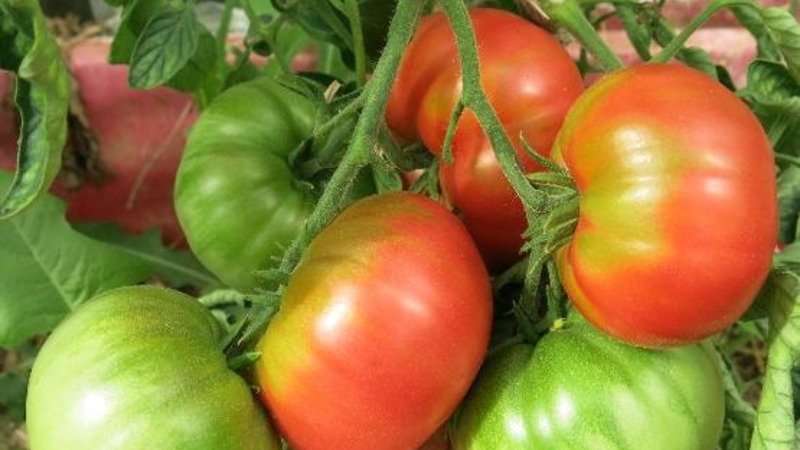
Distinctive features
The type of bush is indeterminate, the height reaches 2.5 m... Densely leafy, leaves are small, emerald hue. The plant requires compulsory pinching, although stepchildren grow inactive.
Each hand sets 4-6 large fruits... So that the branches do not break from their weight, additional support is installed.
Ripening periods are average, 110-120 days pass from the moment of sowing to harvesting. Tomato forms ovaries in any climate.
Productivity is high, 5-7 kg are collected from one seedling, provided that no more than 3 plants are placed per 1 sq. m. Fruiting is extended, lasts until mid-autumn, and in good weather - until the first frost.
Tomatoes are disease resistanttypical for the tomato row. The culture is well resistant to late blight, tobacco mosaic virus, fusarium and rot.
Reference. Large-fruited species generally lack immunity to disease.
Fruit characteristics
Fruits are large, average weight - 400-800 g... The shape is rounded, flattened on top, with pronounced ribbing. Crimson to bright red in color. The taste is sugary with a subtle sourness. The pulp is juicy and fleshy, with watermelon notes in the taste. The peel is thin.
Ripe vegetables are not suitable for preservation due to the large size. They are allowed to be processed into tomato products and a variety of dishes are prepared from fresh tomatoes.
Ripe tomatoes may crack, so it won't work for a long time. Also, they do not withstand long transportation. When transported over short distances, they are stacked in no more than 2 rows.
Reference. Tomato Gigant Novikov has several producers, so the taste and color of ripe vegetables may differ slightly from each other. Growing conditions are the same for all producers.
The photo shows the Giant Novikov tomatoes.
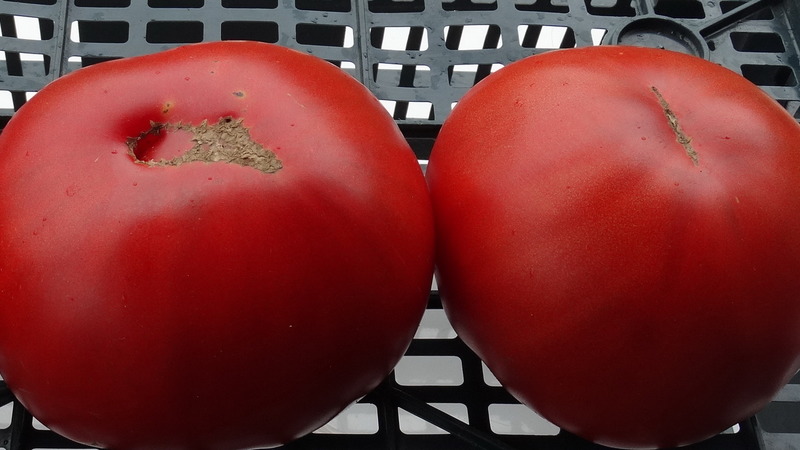
How to grow seedlings
Seeds for seedlings are sown 2 months before planting in the ground... They are preliminarily prepared to improve immunity and the percentage of germination.
Seed preparation
Seed material can be collected independently from large and healthy fruits. But in that case special attention should be paid to preparation for sowing:
- Rejection. The beans are laid out one at a time on the table and carefully examined for visible damage. Healthy specimens should be light in color and free from distortion.
- Checking for filling. 1 teaspoon of salt is dissolved in a glass of water and the grains are kept in the solution for 10 minutes. Empty seeds will float to the surface. They will not rise, so they will be disposed of immediately.
- Disinfection. 1 g of manganese is dissolved in 0.5 glass of water, getting a weak (pink) solution.The grains are kept in it for 20-25 minutes, then washed with running water.
- Treatment with a growth stimulator to increase germination. The seeds are soaked for 10 hours.
Reference. The solution of potassium permanganate must be weak, otherwise a high concentration will ruin all the seed.
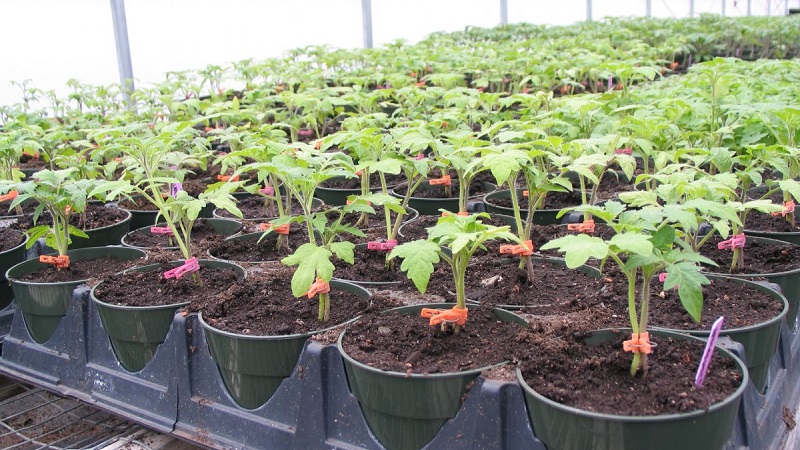
Capacity and soil
The soil for tall tomatoes is prepared from garden soil, humus, peat and river sand... All components are taken in equal proportions and mixed thoroughly. For fertility, add superphosphate or a full complex of minerals.
The prepared soil is spilled with a hot solution of dark manganese for the destruction of pathogenic flora. There are many disease-causing spores in the ground that can cause great harm to seedlings. After the soil has cooled, it is laid out in planting containers.
Placed in a common wooden box or in a separate container - paper honeycombs, plastic cups and peat pots. Previously, the containers are treated with a manganese solution and drainage holes are made at the bottom of each, where excess water will drain. Without drainage, with stagnant moisture, young roots can rot. In addition, with high humidity, the risk of fungal infections is likely.
About other giants for your garden:
What yield can you expect from the Honey tomato
Sowing
In the soil, grooves are made 2 cm deep into which the seeds are laid... After the groove, sprinkle with earth, compact and watered with warm, settled water from a spray bottle. To create a greenhouse effect, containers are covered with foil or glass and left in a room at a temperature of 24–26 ° C.
Seedling care
When shoots appear, the film is removed, rearranging containers on the windowsill. In the first week, the temperature is reduced to 16 ° C. After a week, it is increased to 22 ° C.
The duration of daylight hours is at least 12 hours. When there is a lack of natural light install phytolamps.
Reference. With insufficient lighting, the seedlings noticeably lag behind in development.
During the seedling period moderate watering is required only with warm, settled water from a shallow watering can. After watering, the ground is gently loosened.
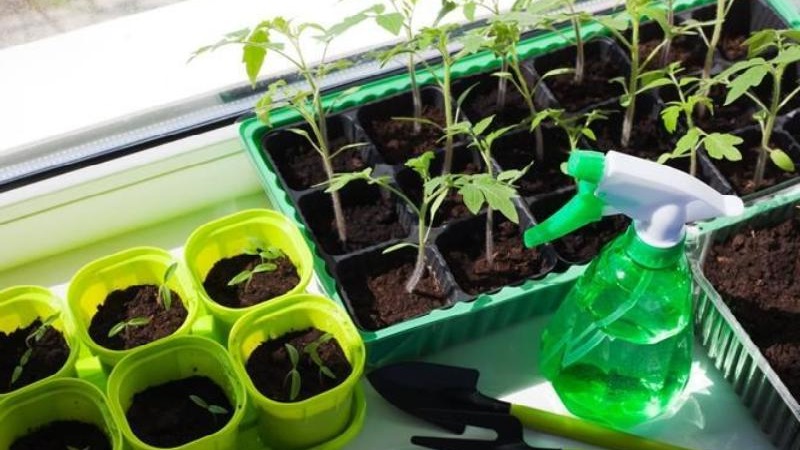
When two true leaves are formed, the seedlings dive, seating in separate containers. Before the procedure, the soil is well moistened and transplanted together with a clod of earth. The land into which the transplant is made is fertilized with a full range of minerals.
2 weeks before transplanting, the seedlings are hardened in the open air.... On the first day, the time spent on the street is no more than 1 hour, while the temperature is not lower than 16 ° C. The time interval is gradually increased to 11 hours.
How to grow tomatoes
The transplant is carried out when the soil warms up to 15 ° C... In cold soil, young bushes will not grow for a long time, besides, the root system can rot in the cold.
Landing
Tomato beds are chosen in a sunny place protected from through winds... If planting is planned in a greenhouse, the ground is pre-shed with copper sulfate to destroy fungal spores.
They dig up the soil, add a complex of minerals and make holes no deeper than 20 cm. At the bottom of each one put a little wood ash and fill it with warm water. For 1 sq. m place 2-3 seedlings at a distance of 60 cm apart. When planted in a checkerboard pattern, the plants will not shade each other and will be able to ventilate.
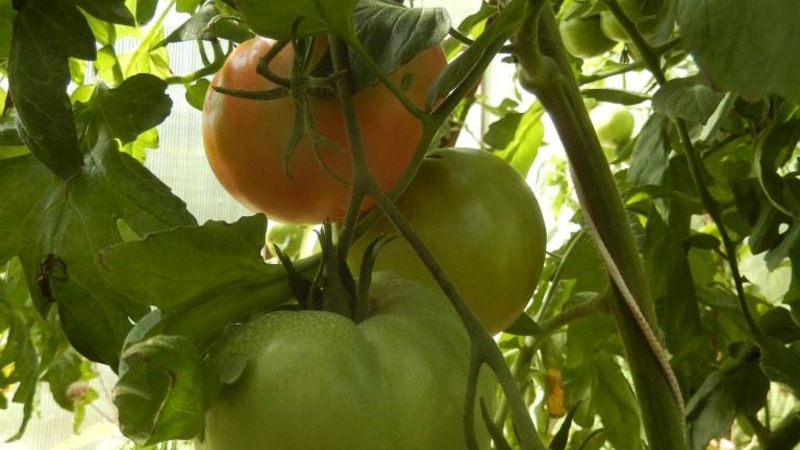
Further care
Regular watering is established as the seedlings take root in a new place.... Watering once every 10 days, on hot days - once a week. To retain moisture, the beds are mulched with peat, straw or sawdust. This is especially important on dry days when there is heavy evaporation.
The crop responds well to drip irrigation... To do this, a plastic bottle without a bottom is installed in the root zone and filled with water, which gradually penetrates from the bottle to the roots.After watering, the soil is loosened and weeds and roots are removed.
Reference. Drip irrigation is convenient to use in a greenhouse. With this irrigation system, the moisture level does not increase.
Tall seedlings require frequent feeding with a full range of minerals... They are fed 1 time in 2 weeks, alternating the introduction of minerals with organic compounds. From organics, an infusion of mullein is used in a ratio of 1:10. It provides soil fertility and minerals nourish the root system.
Reference. It is not recommended to fertilize tomatoes with fresh manure, since after such feeding, the green mass is intensively increased.
Features of cultivation and possible difficulties
Trellises are made in advance to tie the seedlings... Metal supports are installed from different sides of the beds and a wire is pulled horizontally between them. The stem and fruiting branches with heavy fruits are fixed to it. A garter on a trellis is the most convenient option for fixing tall plants, so the seedlings are not injured at all.
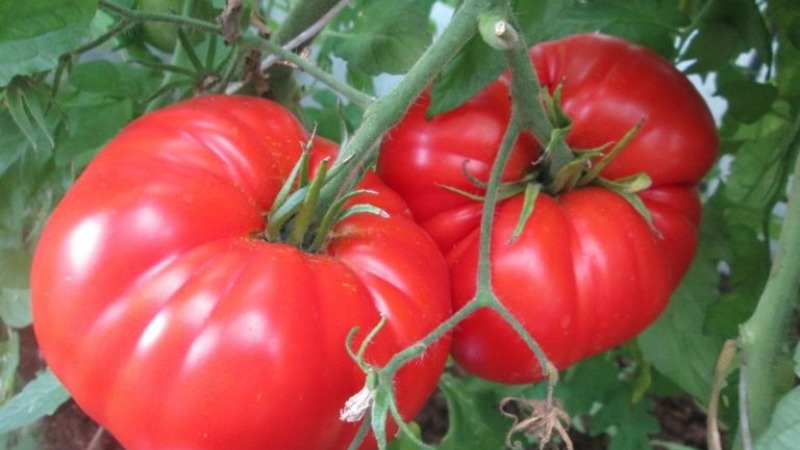
For maximum impact, the bush is formed into 1 or 2 stems... All other stepsons are removed. There are few side shoots, but if they are not removed, they thicken the planting. The lower leaves are removed before the first fruiting branch, since they will rot when in contact with wet beds, which will lead to the development of infections.
Read also:
Diseases and pests
The culture has proven itself to be highly resistant to disease family of nightshades. Therefore, after prophylaxis, the seedlings do not get sick throughout the growing season. This includes moderate watering, systematic loosening, mulching of beds and treatment of plants with fungicidal agents, for example, "Fitosporin". It, among other things, improves plant immunity.
Tomato is less resistant to pests... It suffers from attacks by the Colorado potato beetle, scoops, aphids and slugs. A soap solution is used against aphids and slugs, with which the stems of the seedlings are treated. The Colorado potato beetle is harvested by hand along with its larvae, which the female lays on the back of the leaf. Therefore, it is important to inspect the seedlings carefully and from all sides. In the fight against the scoop, a decoction of wormwood helps: 1 kg of wormwood is boiled in 3 liters of water. Apply twice with an interval of 1 week.
When growing tomatoes in a greenhouse it is ventilated every day so that the level of humidity and temperature does not exceed the norm.
Nuances for open ground and greenhouse conditions
Since the plants are tall, pinch the crownso that they do not consume nutrients for growth. Thus, all forces go to the forming ovaries, due to which large fruits are obtained.
When planting seedlings in the ground after 2.5–3 months, the first vegetables are harvested in a month. Moreover, the overgrown seedlings take root well in the ground, preserving the yield and taste of the fruit.

In the southern regions, the tomato grows well and bears fruit in the open field... In the middle lane, it is better to grow it under a film cover. In the Urals and Siberia, the culture is planted only in greenhouse conditions. Despite the growing conditions, tomatoes bear fruit in the same way. The taste is also preserved in any case.
Harvesting and application of the crop
Due to extended fruiting ripe vegetables are harvested before the first frost. Moreover, the latter are no different from the former, they are just as tasty and large.
The use of vegetables is universal: when fresh, they are used to prepare salads, side dishes, hot dishes, pizza and various snacks. When processed for tomato products, juices, pasta, ketchups, adjika and sauces are obtained from tomatoes.
Due to the juicy pulp and thin rind tomatoes are not stored for a long time and do not withstand long-term transportation.
Advantages and disadvantages
By characteristics and reviews the large-fruited species has many advantages:
- takes root in all regions;
- forms ovaries in any weather;
- uncomplicated agricultural technology;
- high rate of fruiting;
- resistant to disease;
- excellent taste;
- large fruits;
- universal application.
Negative qualities include the need for pinching, garter and formation of seedlings.

Farmers reviews
Most of the reviews about tomato are positive... Gardeners claim that the fruits in the photographs do not differ from those that grow in the beds.
Angelina, Tver: “This is not the first season I have been growing tomato. I would like to note that despite his tall stature, it is easy to take care of him. I really like the taste, sweet, with a characteristic sourness. I collect a whole bucket of vegetables in 1 day ".
Valentina, Abakan: “For the first time I planted a tomato in a ventilated greenhouse. At first, the seedlings did not grow too fast, but they bore fruit well, and by the end of the season they grew more than 1.8 m. On the upper tiers, the fruits formed smaller than from below, but retained their taste. The harvested crop was cut into salads, added to side dishes - the taste is excellent ".
Conclusion
Tomato Giant Novikova fully justifies its name - the fruits grow up to 1 kg. This is one of the largest-fruited Russian varieties. It is highly disease resistant and produces excellent fruiting rates. The culture has been famous among gardeners for a long time and is still loved by many gardeners.